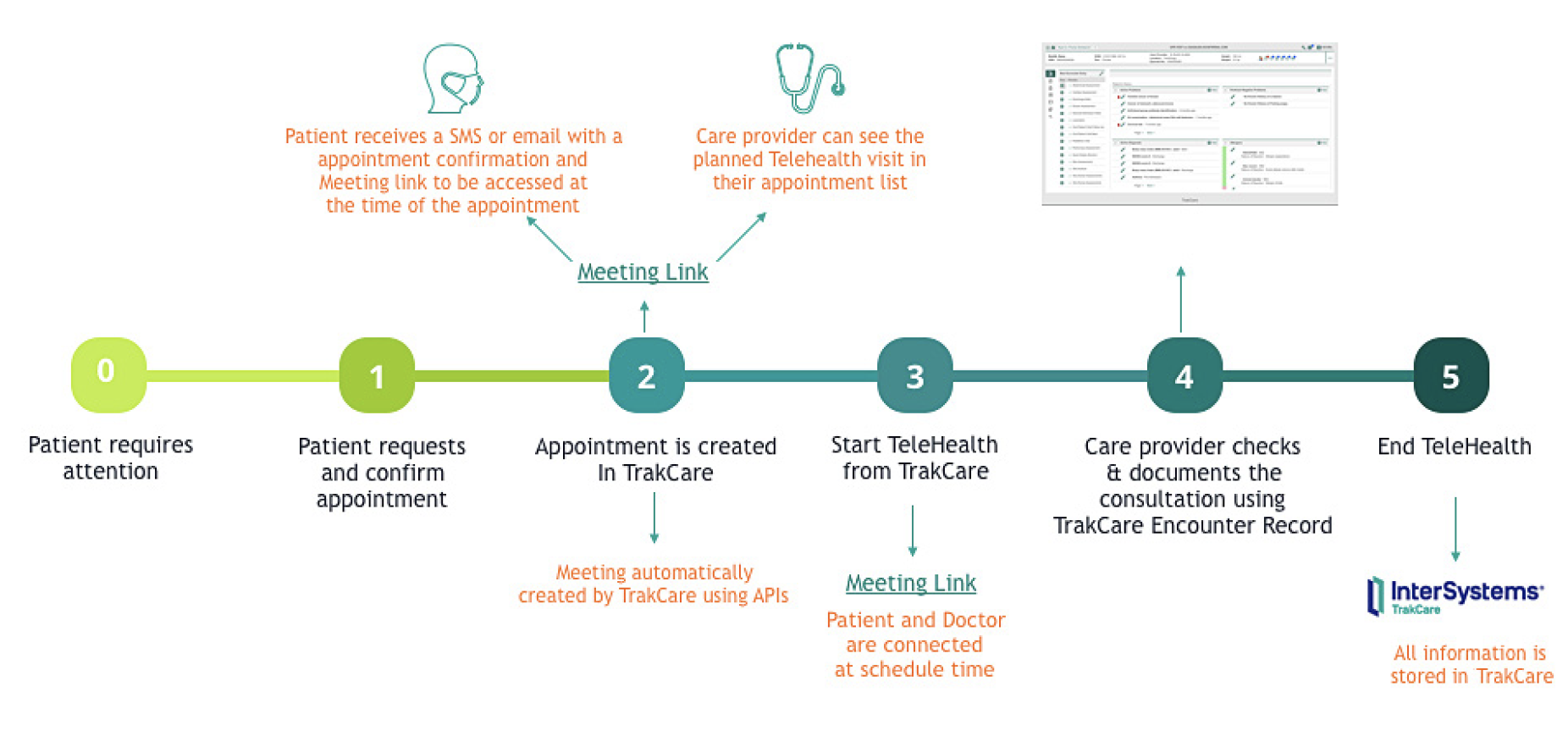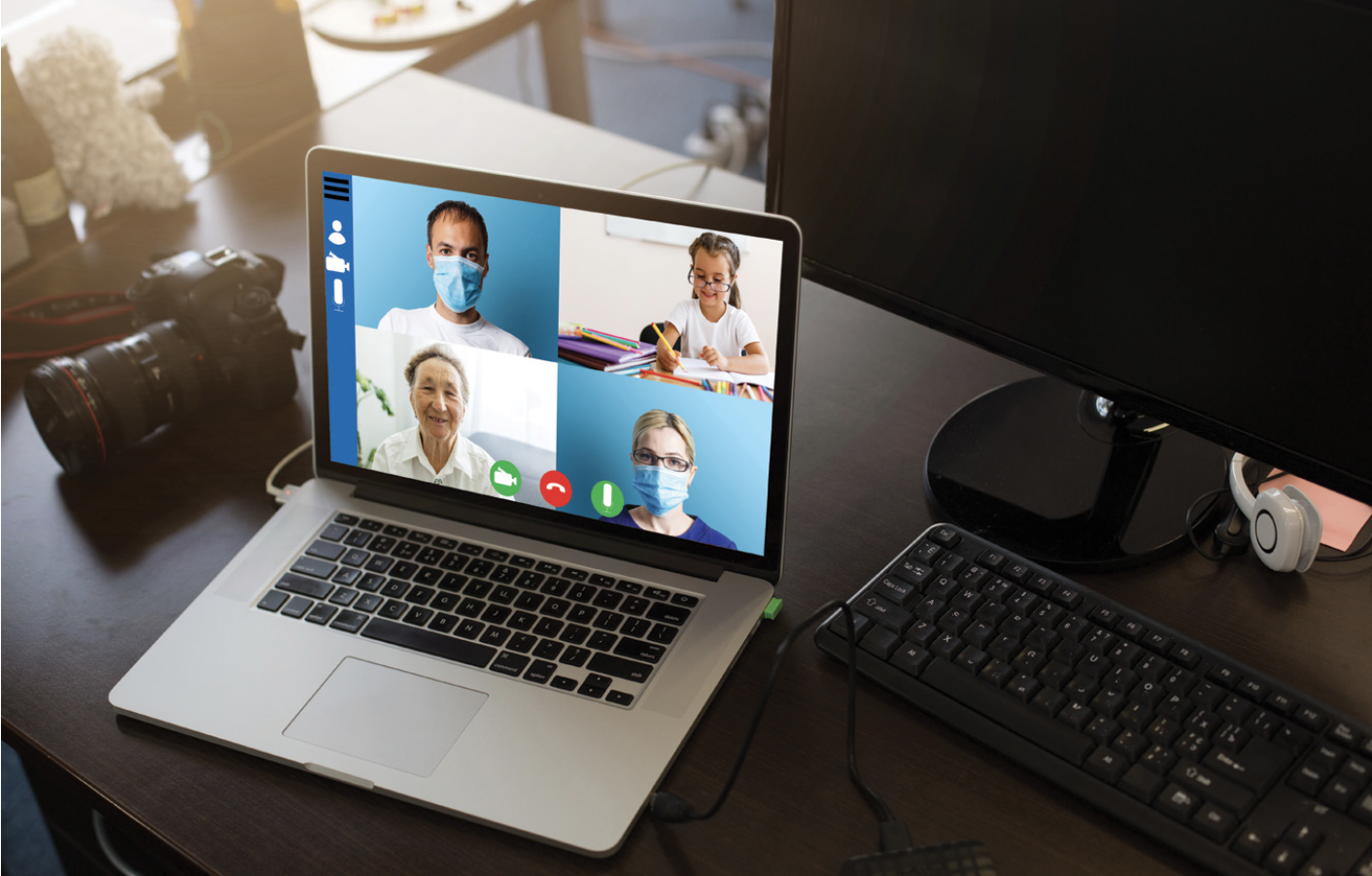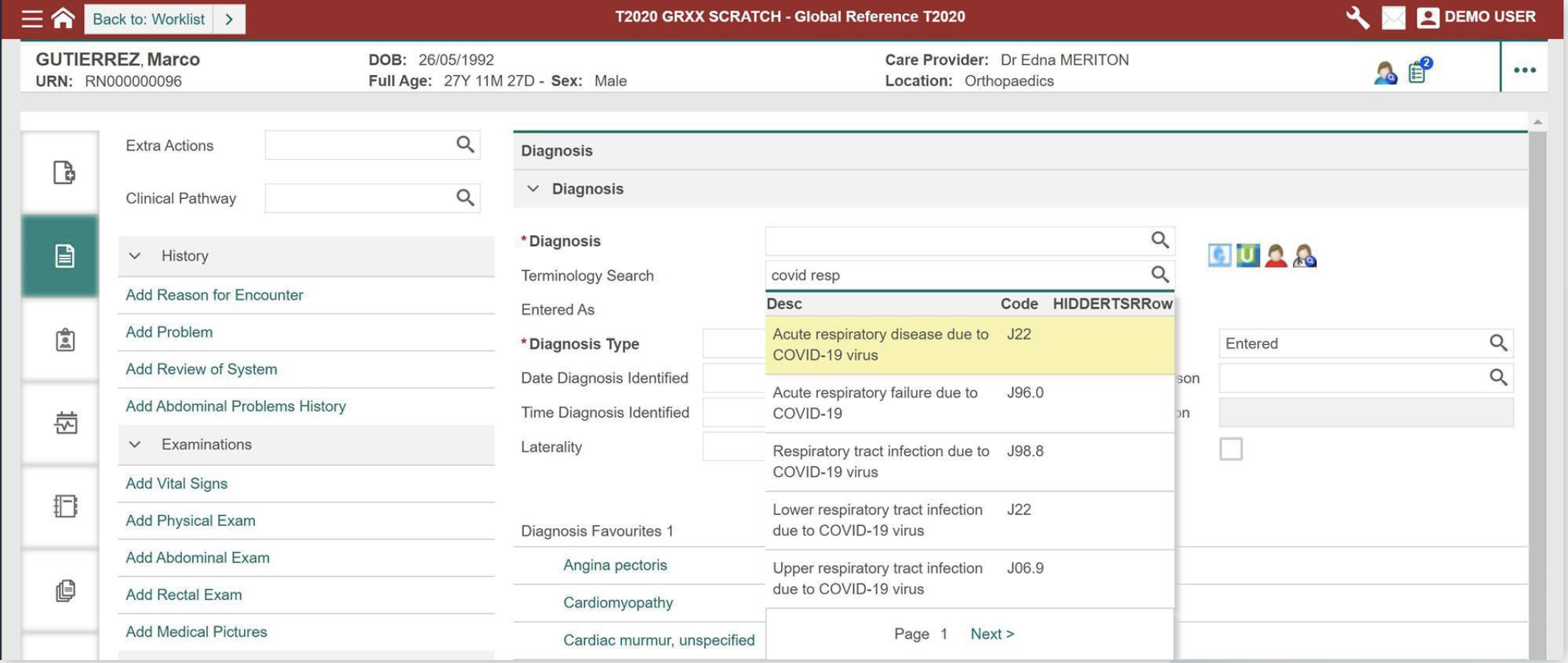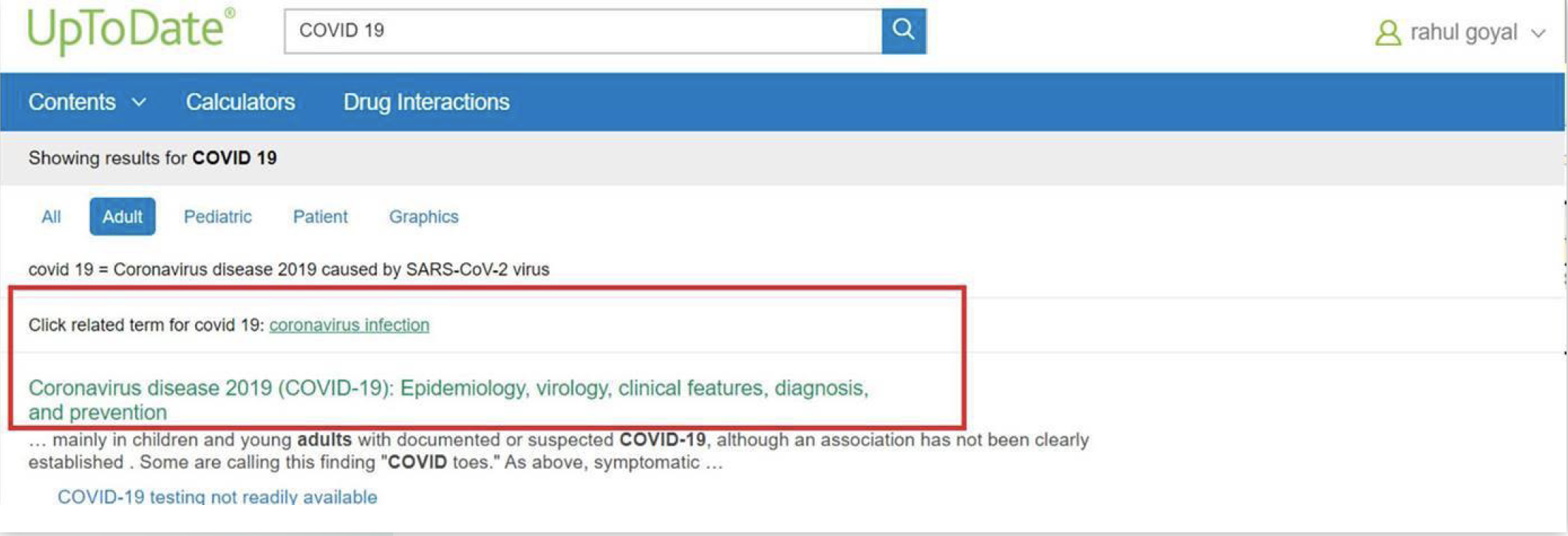From the Desk of Christine Chapman
Sitting in my home office this morning, it dawns on me that I have made this my place of work for two months. Hard to believe. In fact, when we all first moved from the Cambridge office to our home offices, I was certain it would be weeks, not months, we’d be away. I have been impressed with the coordination and communication we have within our teams over these months. We have met our goals and have in fact responded very effectively to the COVID-19 needs of our customers across every product line and every region. We have focused on providing support and solutions for pop-up hospitals and pop-up labs. We have provided triage forms, alerts, and rules to help identify those patients who have received positive results to COVID-19 testing.
We have worked with many of you around specific analysis of your data and have provided dashboards to analyze what is going on. We have provided telehealth capabilities for new and existing customers. And through the interoperability capabilities of our solutions, we have made it possible for our customers to communicate with government bodies about their COVID-19 patients.
While I am proud of what we have achieved on your behalf, I want to also extend my gratitude to all of you on the front line who have done so much over these months. It is a difficult time for the world but we have seen that working together we can make things a little easier. We are here to work with you as our challenges continue. None of us are certain what the new “normal” will be, but you can remain confident that we will be there with you to provide the solutions and services you need.
Telehealth and Virtual Visits with TrakCare – An update
There are many models for delivering EMR-enabled telehealth services, and we are pleased to announce the expansion of our own offering using TrakCare. In an earlier issue of the OnTrak News Flash, we described our initial Skype integration, which was a quick-and-easy way to launch Skype calls in context directly from the patient record. Our expanded telehealth framework is flexible in that it can be deployed with tools other than Skype by a patient providing their personal ID, email address, or phone number.
When making appointments for telehealth consultations, TrakCare users can now store a ‘Meeting Link’ that is unique to the scheduled appointment (for URL-based meeting services). This Meeting Link can be displayed in a column in appointment lists or icon profiles, making it easy for clinicians to connect with the patient.
Another part of the expanded offering is a configurable framework for setting up OAuth servers for authentication using InterSystems IRIS for Health and the API calls required to connect to meeting platforms such as Microsoft Teams or Google Meet. A proposed standard workflow for telehealth consultations using TrakCare would look like this:

TrakCare customers can control the display of the Meeting Links in the user interface by configuring Time Offsets. In this way, access to the meeting is only possible when the scheduled appointment time approaches.
This new capability provides convenience. More importantly, launching the appointment from TrakCare helps to ensure all clinical documentation, patient orders, or other records that result from an appointment, whether captured in face-to-face or virtual encounters, is consistently available in TrakCare and can be leveraged for decision support and other downstream uses. This appointment-based approach for telehealth is being deployed in several regions. If you would like to learn more, please contact your local InterSystems TrakCare representative.
COVID-19: What’s in a Name?
Early in the current coronavirus outbreak, the disease was referred to as “2019 novel coronavirus.” This referred to the fact that this particular coronavirus had not been seen in humans before 2019. Subsequently, the World Health Organization, which is responsible for naming new diseases, named the disease COronaVIrus Disease 2019 (COVID-19). This caused some confusion in the press as articles have referred to the virus as COVID-19. However, the International Committee on Taxonomy of Viruses, responsible for classifying and naming viruses, has named the coronavirus which causes COVID-19 as Severe Acute Respiratory Syndrome-related coronavirus 2 or SARS-related CoV-2 (SARS-CoV-2).
The “2” results from this virus being of the same species of virus as the coronavirus causing the outbreak of SARS in 2003. SARS-CoV-2 belongs to the same coronavirus species, but is distinct from the virus identified in 2003. SARS-CoV-2 causes a similar illness, but importantly is seen as a different virus by our immune system and by tests that can detect the virus particles.
Having an official name for the virus and the disease it causes is an important first step. But enabling interoperability so that we can leverage health information technology and electronic data to help us with the challenges of care delivery, care coordination, resource coordination, and public health in the face of a global pandemic requires a very important step beyond this. It requires the creation of specific definitions and codes in standard terminologies, internationally used code systems for the disease concepts, diagnosis, infectious agents (virus), related lab tests, and other clinical observations related to COVID-19. Two organizations that publish widely used terminologies stepped forward to publish early release versions of new codes and definitions related to COVID-19. Identifier codes and the definitions they are tied to are essential for computer systems in different organizations, different countries, different regions to be able to exchange data and understand the meaning of that data. The very definition of interoperability!
SNOMED International, an organization based in the UK, publishes the code system called SNOMED-CT® (Systemized NOmenclature of MEDicine- Clinical Terms) that defines almost 400,000 clinical concepts. SNOMED has published several codes related to COVID-19, including 840544004, defined as “disease caused by severe acute respiratory syndrome coronavirus 2.” SNOMED codes can be found at (https://snomed.org). LOINC, an organization based at the Regenstrief Institute, part of the University of Indiana, publishes codes related to laboratory tests and other clinical observations, such as vital signs. Among other added codes, LOINC has started to add codes for the increasing number of laboratory tests related to the SARS-CoV-2 virus, including detecting the presence of the virus in respiratory secretions and detecting antibodies to the virus in an individual who has been exposed. Each different test, developed in a different laboratory, measuring a different substance will have a different LOINC code.
There are currently well over 100 tests that have been developed related to the SARS-CoV-2 virus. The World Health Organization publishes the diagnosis coding system ICD- 10-CM used globally. Codes have been added on an emergency basis that include U07.1 defined as COVID-19, virus identified and U07.2 defined as COVID-19, virus not identified. The difference in these, as you may realize, is whether a laboratory test has been performed and is positive for SARSCoV-2. Future OnTrak issues will address related areas of codes for laboratory testing and the importance of standard terminologies in data interoperability, as well as new codes published by organizations maintaining international terminologies.
Lab Enterprise Configuration Changes toSupport SARS CoV-2 Testing
SARS CoV-2 infection is detected using either Polymerase Chain Reaction (PCR) or serological testing techniques across the world. The precise genetic probe used now varies from testing kit to kit – and, as such, there is no internationally recognized standard, although all are equally valid from the current research. InterSystems TrakCare Lab Enterprise now offers enhanced configurations to support this wide variety of tests and testing platforms. The solution now includes commonly used Test Items, Test Sets, Specimens, and Containers, aswell as instrumentation platform configuration.This allows InterSystems clients to implement these items “out of the box,” and the company has also extended configuration to include interpretation rules on the individual test results to derive the final outcome of the screening or confirmatory testing procedure. This content is available within the T2020, T2019, and T2018 releases of TrakCare. Notably, the solution enables mapping of the configured items to codes from one or more classification systems (e.g. LOINC, SNOMEDCT,ICD) using the Lab Enterprise Classification Reference and Interface Coding Reference code tables. This allows organizations to meet mandates for coding standardization that can vary enormously across geographies and time, provides great flexibility for interoperability, and allows them to meet reporting obligations.
Expert Knowledge at Your Fingertips Using TrakCare InfoLinks
When looking for peer reviewed clinical knowledge and decision support guidance, many customers turn to content from trusted vendors such as IMO and Wolters Kluwer. For many years, TrakCare has enabled clinicians to navigate to such information using the InfoLink Buttons located throughout the system – these provide easy access to contextually relevant information and accurately coded clinical data without having to leave normal workflows or sign on to another system when seeking decision support. Recently, both Wolters Kluwer’s and Elsevier announced the availability of content specific to COVID-19. Clinicians can access this information easily using InfoLinks. InterSystems customer Mediclinic Middle East, a private hospital group with seven hospitals in UAE with more than 900 inpatient beds and 20 outpatient clinics throughout the region, has taken advantage of this capability during the pandemic.

Dr. Rahul Goyal shares his experience.
“Mediclinic quickly saw the COVID-19 endemic becoming a pandemic and acted quite swiftly to introduce tools and measures in Bayanaty (Mediclinic’s branded version of TrakCare) to help clinicians provide best practice care to patients while the treatment, guidelines, and the evidence was still evolving. We leveraged the COVID-19 screening tool presented to us by the InterSystems team and incorporated it in our workflows to prompt frontline/triage nurses to ask all the relevant questions and based on WHO guidelines. The tool would indicate to the clinical team whether the patient should be suspected of having an infection and therefore the need do further testing.
We have a pre-existing integration with intelligent medical objects (IMO) and UpToDate on the diagnosis screen. IMO terminology search helps the clinicians to search the most appropriate diagnosis using a “Google type” search, while the UpToDate InfoLink helps the physicians to search for an appropriate resource, management or treatment update, patient information leaflets, etc… at the click of a button.
We also updated our ICD-10 and SNOMED configuration to accommodate the latest COVID-19 codes.
Added to that, we went through the national unified guidelines in the UAE and converted the recommended baseline investigations into order-sets so that the physicians could order by one click to reduce the potential for any variance in treatment. We did an audit of the order-set usage and found that it had been used more than 500 times in less than a week.
As a Physician Informatics lead for MediClinic, I send out a monthly bulletin to all TrakCare users highlighting enhancements and quick tips and we sent out an “extra” supplementary COVID-19 enhancement bulletin in the end of March.
In summary, I feel the enhancements were timely and helped clinicians focus more on patient care and the regular communication through newsletters/bulletins assured them that the screening tool and order sets in the system are current and relevant and evidencebased.”

Searching for and accurately selecting a coded COVID-19 Diagnosis using IMO Terminology lookup on diagnosis screen.

Access to Wolters Kluwer’s UpToDate COVID-19 information from the InfoLink on Diagnosis entry screen.

Viewing Wolters Kluwer’s UpToDate COVID-19 information without leaving TrakCare.
A Message from Elsevier, a Trusted Third-Party Content Provider
Elsevier is committed to supporting efforts to battle COVID-19 pandemic by providing open access to trusted clinical and research resources and tools focused on the latest evidence-based practices for COVID-19.
Elsevier made freely available the COVID-19 Healthcare Hub to help healthcare organizations deliver a comprehensive COVID-19 clinical support program for staff and patients, including:
• Staff Education (eLearning modules, Skills, Procedures, DrugMonographs, Overviews)
• Patient Education (Patient handouts, videos)
• Treatment (Order Sets)
• Care Provision (Care Plans)
• Public & Patient Information
TrakCare can provide access to Elsevier content from within normal clinical workflows using our InfoLink feature.



